Thanks to @ruthrosenholtz.bsky.social for the thought-provoking article. I'm looking forward to reading all the other commentaries and the full reply!
26.11.2025 13:40 — 👍 0 🔁 0 💬 0 📌 0
Our commentary @stigchel.bsky.social on Ruth Rosenholtz' Visual Attention in Crisis paper is now available:
doi.org/10.1017/S014...
We argue that effort must be considered when aiming to quantify capacity limits or a task's complexity.
26.11.2025 13:40 — 👍 9 🔁 4 💬 1 📌 0
Congrats!! 🎉
25.11.2025 19:16 — 👍 0 🔁 0 💬 1 📌 0
Celebration time 🥳 @liangyouzhang.bsky.social publishes the 1st empirical paper of his PhD!
We show that numerosity adaptation (a seemingly high-level stim property) suppresses neural responses in early visual cortex; these adaptation FX increase as we progress thru the visual processing hierarchy.
24.11.2025 20:26 — 👍 9 🔁 3 💬 0 📌 0
This paper is now published in Journal of Neuroscience!
www.jneurosci.org/content/earl...
24.11.2025 18:39 — 👍 9 🔁 1 💬 0 📌 0
OSF
Planning on running a RIFT study? In a new manuscript, we put together the RIFT know-how accumulated over the years by multiple labs (@lindadrijvers.bsky.social, @schota.bsky.social, @eelkespaak.bsky.social, with Cecília Hustá and others).
Preprint: osf.io/preprints/ps...
29.10.2025 10:52 — 👍 22 🔁 8 💬 1 📌 1
Big thanks to @henryjones.bsky.social for his help with the simulation analysis! And of course thanks to all other co-authors Vicky Voet, Ed Awh, @cstrauch.bsky.social @stigchel.bsky.social.
Also thanks to the anonymous reviewers for their valuable input.
24.10.2025 08:35 — 👍 3 🔁 0 💬 0 📌 0

Highlighting a supplementary analysis we added: Prior work showed that cross-decoding asymmetries can sometimes be driven by SNR differences between conditions instead of 'true' neurocognitive effects. We simulated EEG data and showed that SNR is unlikely to account for our cross-decoding results.
24.10.2025 08:35 — 👍 2 🔁 0 💬 1 📌 0
Filled with a bunch of extra analyses, this is now accepted in The Journal of Neuroscience @sfn.org! You can have a sneak peak here: www.biorxiv.org/content/10.1...
24.10.2025 08:35 — 👍 14 🔁 2 💬 1 📌 1
Thanks Sebastiaan!!
17.10.2025 13:41 — 👍 0 🔁 0 💬 0 📌 0
Thanks to everyone that contributed to project @henryjones.bsky.social, Stefan Van der Stigchel and Ed Awh. Also a special thanks to @dsuplica.bsky.social for helping out with the data from Exp. 3!
14.10.2025 14:04 — 👍 2 🔁 0 💬 0 📌 0
In all experiments, we found a consistent pattern: pupil size tracked attentional breadth and WM load independently. This converges with recent EEG decoding work demonstrating a dissociation between spatial attention and working memory gating.
14.10.2025 14:04 — 👍 1 🔁 0 💬 1 📌 0

We analyzed pupil size - which reflects both spatial attention and WM load - data from three experiments wherein attentional breadth and working memory load were manipulated independently. For example, using dot cloud stimuli the spatial extent of stimuli were orthogonal to the number of clouds.
14.10.2025 14:04 — 👍 0 🔁 0 💬 1 📌 0

Spatial attention and working memory are popularly thought to be tightly coupled. Yet, distinct neural activity tracks attentional breadth and WM load.
In a new paper @jocn.bsky.social, we show that pupil size independently tracks breadth and load.
doi.org/10.1162/JOCN...
14.10.2025 14:04 — 👍 36 🔁 15 💬 1 📌 1

1/ Why are we so easily distracted? 🧠 In our new EEG preprint w/ Henry Jones, @monicarosenb.bsky.social and @edvogel.bsky.social we show that distractibility is associated w/ reduced neural connectivity — and can be predicted from EEG with ~80% accuracy using machine learning.
28.09.2025 19:14 — 👍 61 🔁 25 💬 1 📌 1
Very excited to announce my first paper is out in @currentbiology.bsky.social! Using EEG, we identify an item-based measure of storage in working memory that generalizes across auditory and visual items.
authors.elsevier.com/a/1ljFF3QW8S...
#PsychSciSky #neuroskyence #workingmemory
04.09.2025 16:34 — 👍 15 🔁 7 💬 1 📌 2
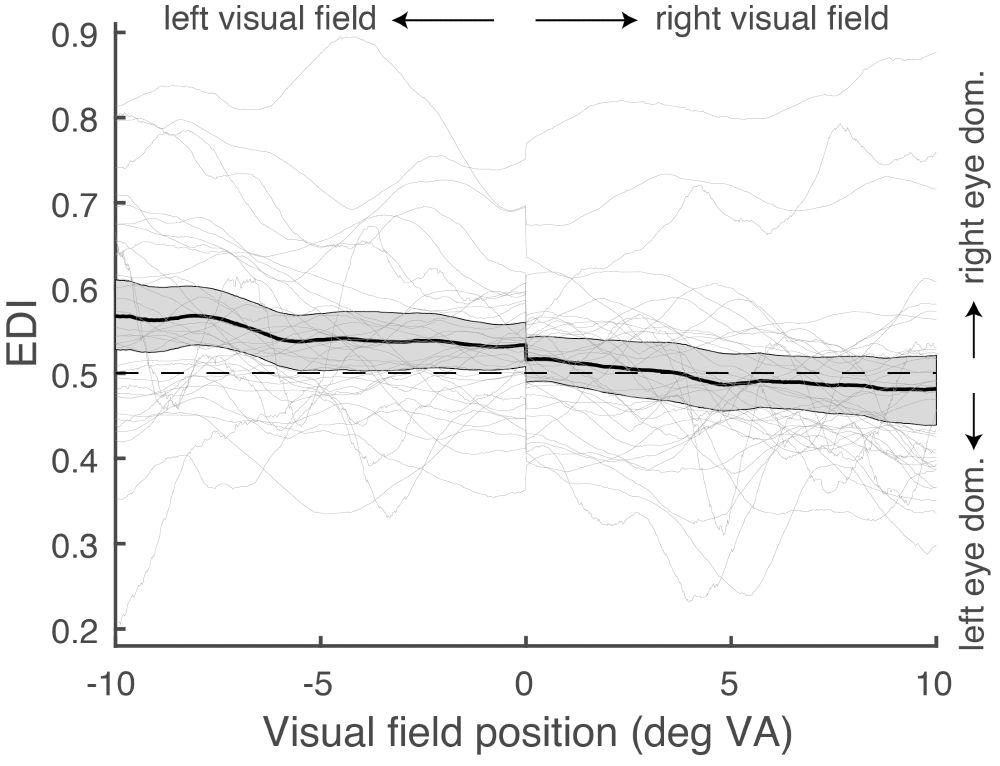
Sensory eye dominance varies over the horizontal axis of the visual field: left eye dominance for the right visual field; right eye dominance for the left visual field.
Surely you know about eye dominance. You probably don’t know it’s not a unitary phenomenon: in this paper I show that sensory eye dominance varies over the visual field. In the Discussion I propose an explanation for why this variation might exist. Curious? Read it here: doi.org/10.1167/jov....
02.07.2025 07:46 — 👍 6 🔁 3 💬 1 📌 0
Had a blast at last week's symposium! Inspiring to hear all the talks about EEG and attention.
I presented on the neural correlates of saccade preparation and covert spatial attention. Check out the preprint here: doi.org/10.1101/2025...
30.06.2025 09:48 — 👍 6 🔁 0 💬 1 📌 0
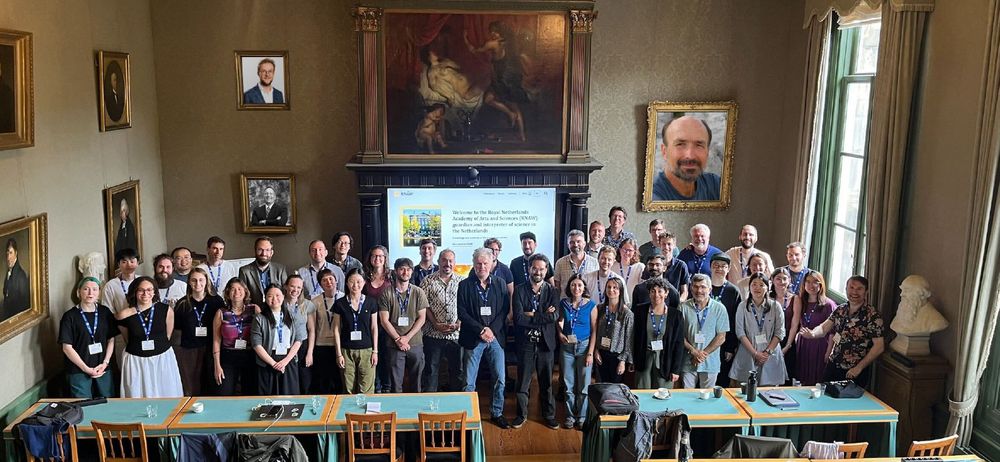
Last week's symposium titled "Advances in the Encephalographic Study of Attention" was a great success! Held in the KNAW building in Amsterdam and sponsored by the NWO, many of (Europe's) leading attention researchers assembled to discuss the latest advances in attention research using M/EEG.
30.06.2025 07:12 — 👍 25 🔁 7 💬 4 📌 3
In this new preprint, in review @elife.bsky.social, we show what processing steps make up the reaction time using single trial #EEG modelling in a contrast #decision task.
In this 🧵 I'm telling the story behind it as I think it is quite interesting and I can't write it like this in the paper...
26.06.2025 07:36 — 👍 28 🔁 11 💬 2 📌 5
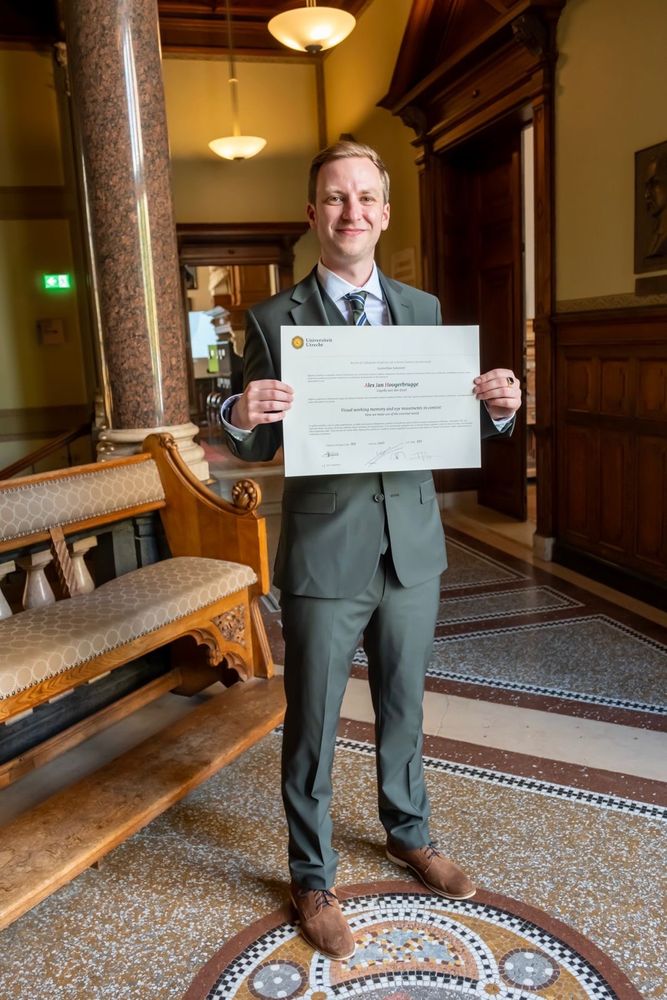
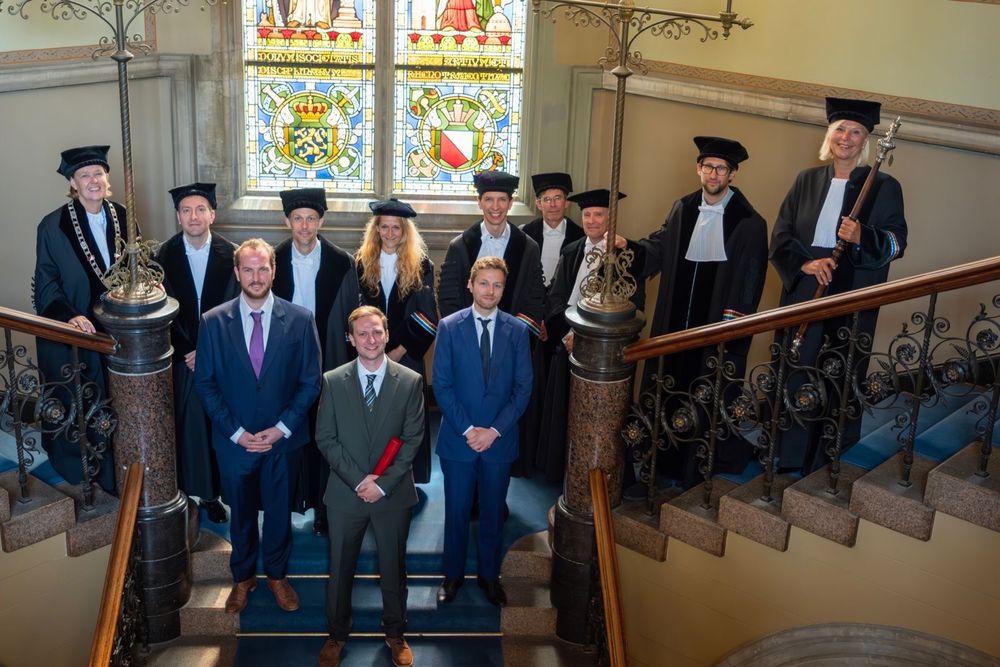
Thrilled to share that I successfully defended my PhD dissertation on Monday June 16th!
The dissertation is available here: doi.org/10.33540/2960
18.06.2025 14:21 — 👍 16 🔁 2 💬 3 📌 1
New paper out at Journal of Memory and Language! We knew that individual differences in working memory predict source memory, but did it predict simple item recognition memory (that relied on less attention resources than source memory)? Our answer is: YES! (with @edvogel.bsky.social ) 1/5
18.06.2025 15:56 — 👍 9 🔁 3 💬 1 📌 0
Now published in Attention, Perception & Psychophysics @psychonomicsociety.bsky.social
Open Access link: doi.org/10.3758/s134...
12.06.2025 07:21 — 👍 14 🔁 8 💬 0 📌 0
Thanks to the support of the Dutch Research Council (NWO) and @knaw-nl.bsky.social , we're thrilled to announce the international symposium "Advances in the Encephalographic study of Attention"! 🧠🔍
📅 Date: June 25th & 26th
📍 Location: Trippenhuis, Amsterdam
04.06.2025 20:14 — 👍 9 🔁 8 💬 2 📌 0
Sensory sensitivity
We study how people react to sensory input like lights and sounds. You can help by completing a short online questionnaire. You can also sign up for an optional 3-hour lab session in Utrecht (€12/ hour) involving EEG and hearing tests.
Take the survey here: tinyurl.com/457z89ta
04.06.2025 08:43 — 👍 2 🔁 1 💬 0 📌 0
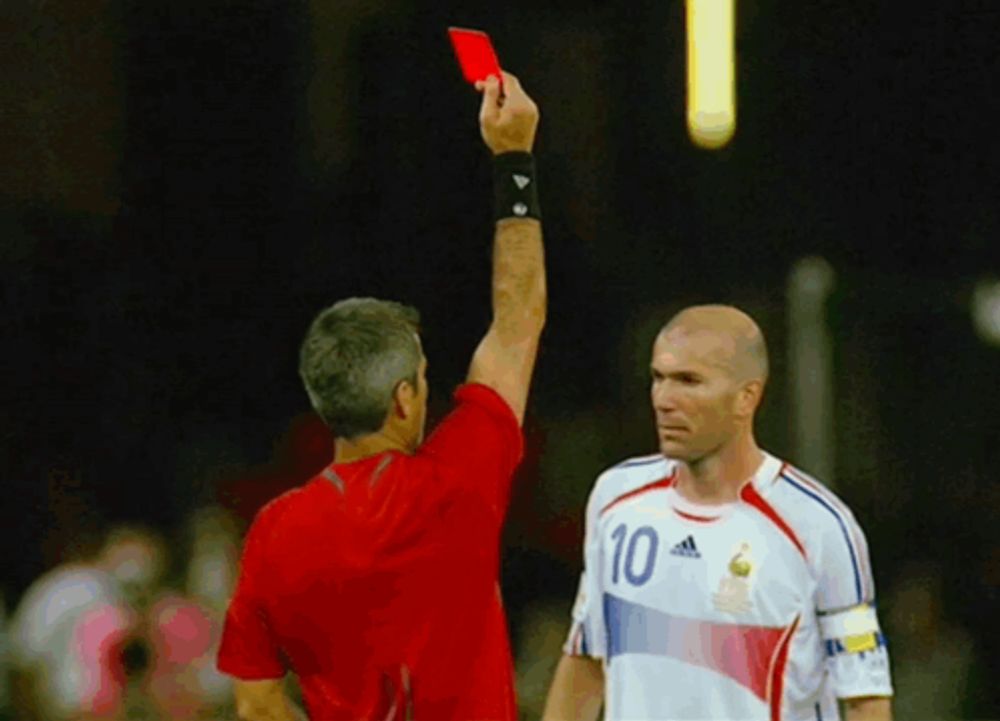
a soccer player with the number 10 on his jersey is being shown a red card
ALT: a soccer player with the number 10 on his jersey is being shown a red card
Long overdue! Didn't promote this one amid twitter/X chaos. But nearing the end of my PhD, I want to do this project justice and post it here:
Is visual working memory used differently when errors are penalized?
Out already 1+ year ago in JEP:LMC: research-portal.uu.nl/ws/files/258...
🧵 (1/3)
29.05.2025 07:48 — 👍 11 🔁 1 💬 1 📌 1
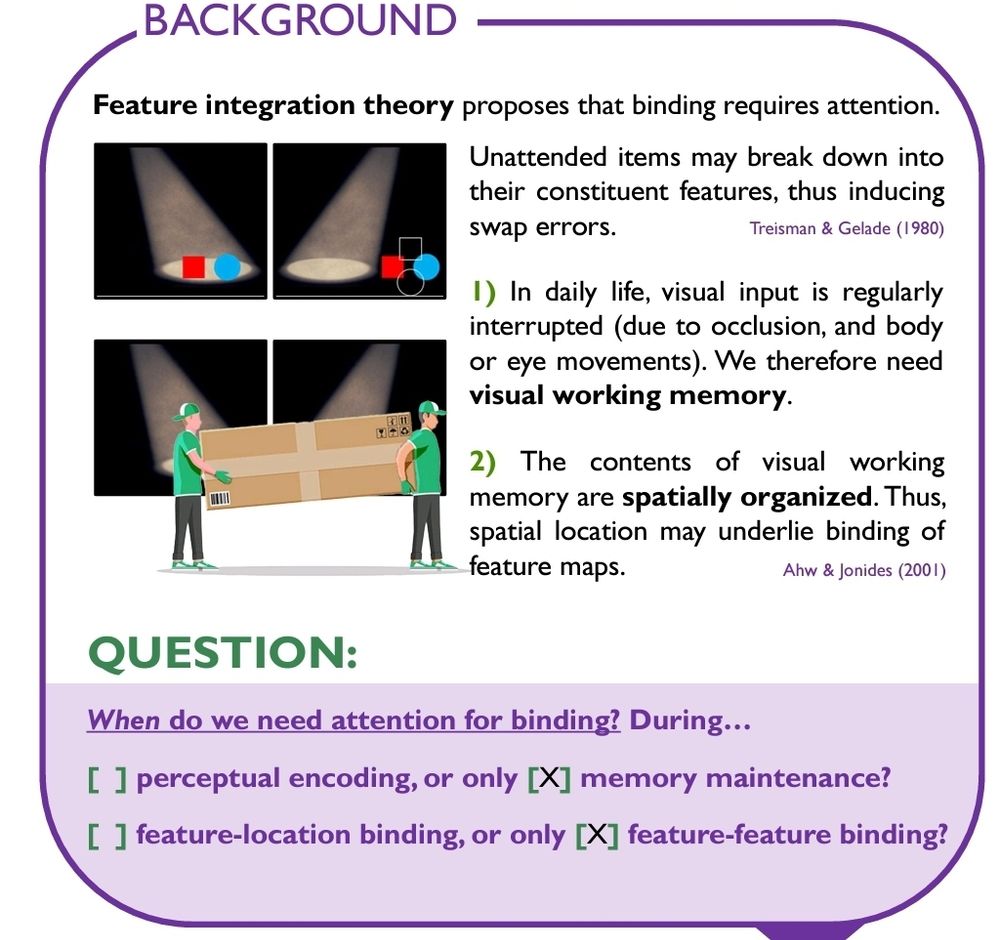
Good morning #VSS2025, if you care for a chat about the role of attention in binding object features (during perceptual encoding and memory maintenance), drop by my poster now (8:30-12:30) in the pavilion (422). Hope to see you there!
19.05.2025 12:36 — 👍 14 🔁 3 💬 3 📌 0
@vssmtg.bsky.social
presentations today!
R2, 15:00
@chrispaffen.bsky.social:
Functional processing asymmetries between nasal and temporal hemifields during interocular conflict
R1, 17:15
@dkoevoet.bsky.social:
Sharper Spatially-Tuned Neural Activity in Preparatory Overt than in Covert Attention
18.05.2025 09:41 — 👍 8 🔁 4 💬 1 📌 0
Cognitive neuroscientist.
Professor at College de France in Paris.
Head of the NeuroSpin brain imaging facility in Saclay.
President of the Scientific Council of the French national education ministry (CSEN)
Professor in Brain & Cognition, KU Leuven, Belgium - The brain rules the mind; would-be runner and musician.
Neuroscientist extraodinaire
PostDoc @ Burdakov Lab, ETH Zurich
Computational neuroscientist at Sorbonne University, Paris. Interests at the intersection of cognition, motor control, and their circuits.
heikestein.github.io
Schall’s research program seeks understanding of how the brain guides, controls, and monitors behavior.
https://www.yorku.ca/science/research/schalljd/
PhD Candidate at Vanderbilt (Cognition & Cognitive Neuroscience) | Visual perception, cognition, and computational modeling
Lab account of the Siegel Lab (managed by lab members), department of neural dynamics and magnetoencephalography @hih-tuebingen.bsky.social, CIN, UKT & @unituebingen.bsky.social. PI: markussiegel.net, lab members: https://go.bsky.app/Lyatq2g
Associate Professor, molecular ecologist @ Utrecht University.
Zombie-making parasites, extended phenotypes, ant behavior, fungal hyper parasites, fungi for sustainable solutions. DEI advocate. #firstgen
Metal head, cat lady, dog mom, BJJ black belt.
🧠 Affective/Social/Cognitive Neuroscientist | Postdoc BoehmeLab CSAN_LiU
Studying natural vision at JLU Giessen using psychophysics, neuroimaging, and computational models, PI: Daniel Kaiser.
danielkaiser.net
Psycholinguist into L2 processing, emotion communication, and language & cognition (decision making, motion events, etc) | Postdoc @UniMannheim, Germany | she/her (Pssst, I'm more active on LinkedIn ;-) )
Professor (developmental cognitive neuroscience and visual psychophysics) at a public University. Living around Boston. Dad of two daughters. (Views are my own)
Reader in Psychology at the University of Essex. Probably somewhere doing experiments with eyes.
Scientist studying cognitive development, mom of 2 girls, immigrant from Hungary, Brookline Town Meeting member (2022-25)
Cognitive scientist, postdoc at Justus Liebig University, Giessen. Natural/artificial vision/cognition.
Professor of Psychology University of Toronto, scene perception by humans and machines, visual aesthetics.
bwlab.org
Postdoctoral fellow at Artctic University of Norway; formerly MPI CBS, Humboldt, Ghent, and Duke University
External and internal attention; mind wandering; interoception and control over internal body
https://samverschooren.github.io
cognitive neuroscience, U Nottingham











